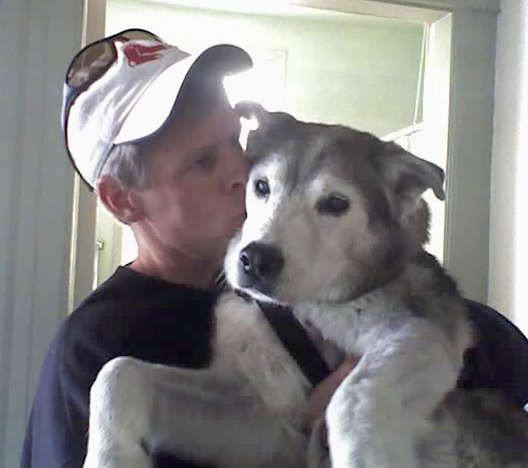
The modern phenomenon of "road rage" is pervasive. Motorists in the U.S. routinely heap abuse on each other, as well as innocents on bike and foot and even dogs. Road rage (or "aggressive driving" or "intermittent explosive disorder") gets some media attention, but rarely becomes a cause celebre.
But when the routinely abused strike back or respond in kind, expect a backlash of "man bites dog" media coverage. Such is clearly the case with the recent fallout from the March Critical Mass ride in San Francisco. One troubled cyclist, burdened by unknown traffic-related angst, fueled by the perceived provocation of an impatient driver, and empowered by the anonymity of a group, smashes a vehicle window and provokes a media storm over bikes.
As the San Francisco bicycling community learned from a similar experience with Critical Mass in 1997, heightened media attention on bicycling presents a crisis, but also an opportunity. It creates a space for discourse on the place of bicycling in our transportation system. Any publicity is good publicity, as the cliche goes, and bicyclists in San Francisco are organized, vocal, and generally media savvy. We push back. We make the case for bicycling.
Fortunately, our efforts over the years have built a reservoir of public support, and have won more than a few friends in the local media. One such supportive publication is the San Francisco Bay Guardian, which published this op-ed:
Tempest in an urban teapotThe March incident in San Francisco has also attracted national media attention. National Public Radio's "Day to Day" program had this feature, interviewing the motorist and several bicyclists. Interbike had a thoughtful piece. The Fredcast interviewed by friend Jon Winston, host of the inimitable Bikescape podcast. Reactionary dimwit Michelle Malkin offered typical stupidity. And, of course, considerable comment by bloggers.
Critical Mass and the press
Our local road-culture war has erupted again, this time thanks to some unsavory gossip columnists at the monopoly paper in town. Wildly distorted accounts of two confrontations at Critical Mass in March have been presented as evidence that bicyclists are antisocial, out of control, and generally immature scofflaws. Such accounts serve to frame a narrative that is in sharp contrast with the actual experience of tens of thousands of bicyclists, pedestrians, and motorists on the last Friday of every month, not just in San Francisco but in hundreds of cities worldwide where Critical Mass rides take place regularly. (Read more.)
Critical Mass has enthusiasts and detractors among bicyclists. Everyday urban bike commuters tend to support it as an empowering event. Infrequent recreational cyclists tend to cringe in fear of provoking motorist rage. I'm an enthusiast.
Whatever else it may have accomplished, Critical Mass creates conversation. And talking about bikes is always a good thing.
Image: Web capture
Resources: SFBC "Give, Get Respect" Flyer
Visit: Paul Dorn's Bike Commuting Tips


5 comments:
Good points and good further reading/listening. Thank you for pulling it together.
Sadly, many bike bloggers who aren't favorable to Critical Mass were overly quick to hop on the Chronicle's distorted coverage. They didn't wait until the cyclists side of the story came out. The Fredcast interview with Jon was great.
The fredcast interview was biased in favor of the cyclists. David did this becuase Jon starts cussing at anyone who challenges him. There is absolutely no reason to ever throw your bike at a car. Don't give me any excuses. I like the commentary found at www.theroadbike.com. That guy hit the nail on the head. 15 years and no progress made. Makes you wonder.
With all due respect to the author of theroadbike.com, he doesn't know what he's talking about. He asks: "What has changed in the 15 years that (Critical Mass) has been taking place?" Plenty. For the good.
To suggest an analogy, Critical Mass might be viewed as the "steam," while organized bike advocacy groups are the "piston." Working together, bicyclists can make great progress. Certainly this has been the case in San Francisco.
Many apolitical or quasi-political young bicyclists gravitate to Critical Mass, which is more fun than interminable city council hearings. If the organized bike advocates connect with this youthful energy, they can capture the better participants for activism all month long. This was the case with the San Francisco Bicycle Coalition, which has always provided tacit--not explicit--support for Critical Mass. It would be impossible to argue that San Francisco bicyclists have made no progress over the past 15 years.
When Critical Mass emerges in a community, bike advocates have a choice: side with the cops, or side with the young (or young in spirit) bicyclists. It's easier to make an argument when you're viewed as a friend, rather than a foe.
The broken windshield was inexcusable. However, to condemn all the participants of Critical Mass is, frankly, stupid. Such a hostile posture sets back bicycle advocacy. You might question the motives of Critical Mass participants, but you won't gain their ear when perceived as an enemy.
The comment: "But, when people start breaking the law and causing problems, it gives the cycling community a bad name." Really? Motorists kill more than 40,000 people a year in the U.S., often as the result of rampant law-breaking. Do all motorists bear the "bad name" and have their interests set back because of individual drivers who run red lights?
A somewhat simplified to the public reaction to the March 2007 CM incident : http://www.thielges.members.sonic.net/bac/cm2007.03/bike_opinions2.1.htm
Hopefully better information and education can depressurize the boiler on our streets.
Post a Comment